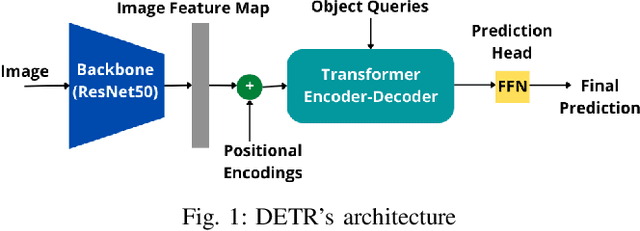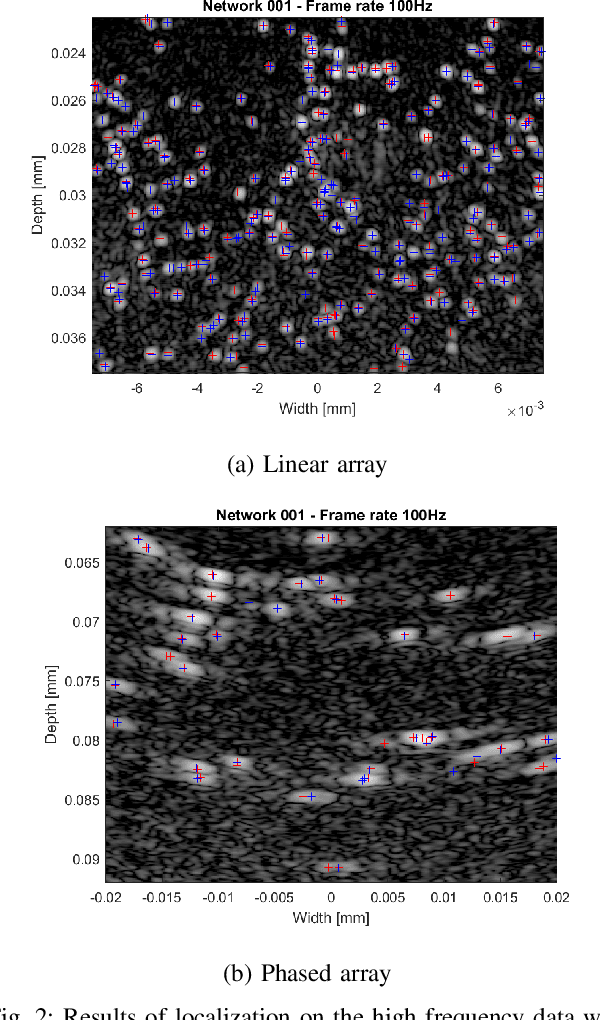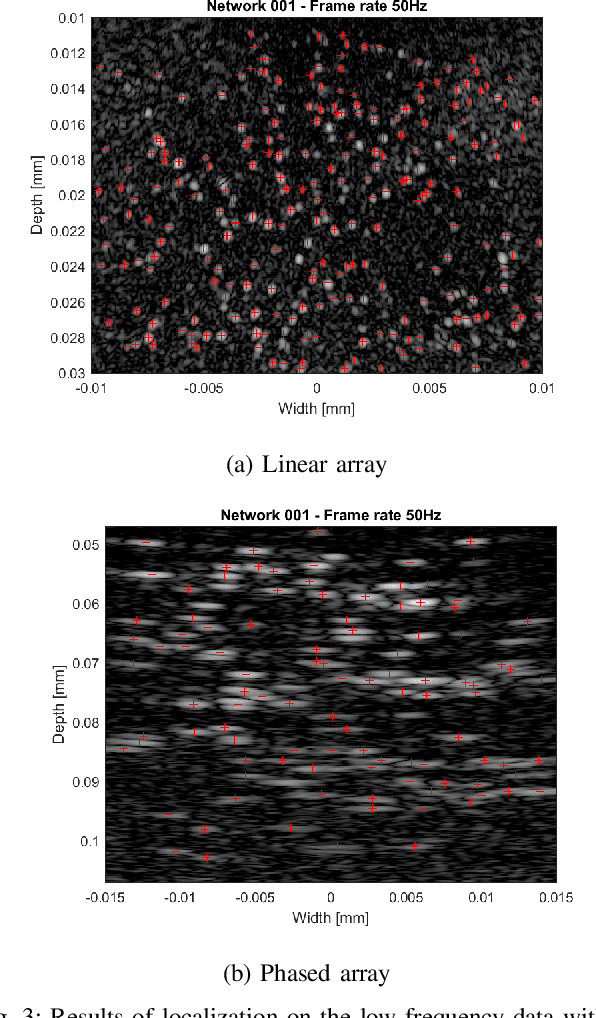Transformer-Based Microbubble Localization
Paper and Code
Sep 23, 2022


Ultrasound Localization Microscopy (ULM) is an emerging technique that employs the localization of echogenic microbubbles (MBs) to finely sample and image the microcirculation beyond the diffraction limit of ultrasound imaging. Conventional MB localization methods are mainly based on considering a specific Point Spread Function (PSF) for MBs, which leads to loss of information caused by overlapping MBs, non-stationary PSFs, and harmonic MB echoes. Therefore, it is imperative to devise methods that can accurately localize MBs while being resilient to MB nonlinearities and variations of MB concentrations that distort MB PSFs. This paper proposes a transformer-based MB localization approach to address this issue. We adopted DEtection TRansformer (DETR) arXiv:2005.12872 , which is an end-to-end object recognition method that detects a unique bounding box for each of the detected objects using set-based Hungarian loss and bipartite matching. To the authors' knowledge, this is the first time transformers have been used for MB localization. To appraise the proposed strategy, the pre-trained DETR network's performance has been tested for detecting MBs using transfer learning principles. We have fine-tuned the network on a subset of randomly selected frames of the dataset provided by the IEEE IUS Ultra-SR challenge organizers and then tested on the rest using cross-validation. For the simulation dataset, the paper supports the deployment of transformer-based solutions for MB localization at high accuracy.
 Add to Chrome
Add to Chrome Add to Firefox
Add to Firefox Add to Edge
Add to Edge